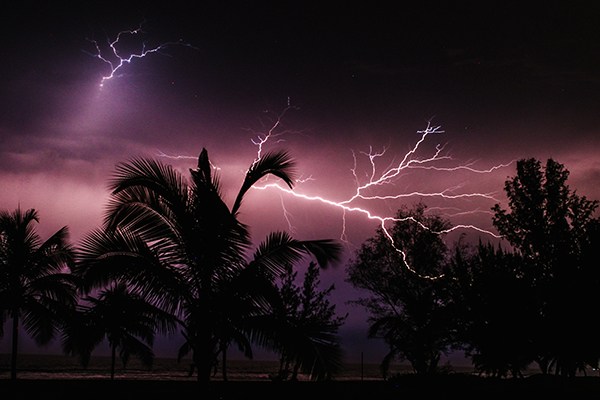Do you have a favorite tree in your yard? It might sound like a simple question but it really makes the point that trees can be almost like friends. Sure, they provide privacy, shade, beauty and even increase the value of your property, but they’re also a lot like a good friend.

That’s why the decision to remove a tree can be so difficult. Unfortunately, sometimes it’s necessary, usually because a tree poses a potential danger. If you suspect one of your trees may be in danger of falling — especially with this round of rainstorms we’re currently experiencing — it’s time to act. It’s time to give us a call and decide if there’s a hazard you don’t want to be liable for.
Step One
The first thing you need to do is look for signs that your tree is dead or dying. Begin by scratching a small piece of bark off of a few twigs. Look at the layer underneath the bark — if it’s brown and dry, your tree could be in trouble. Look for other signs, including:
- Mushrooms or other decay-producing fungi at the base of the trunk
- Trunk damage, including chipped or peeling bark and cracks
- Large openings — cavities — in the trunk or larger branches
- Dead or hanging branches in the upper crown
- Fine twigs without living buds near the ends of branches
Does your favorite tree have one or more of these signs? Then it’s time to give us a call. We can give you a professional analysis to determine if the tree can be saved or needs to be removed.
Step Two
If a tree needs to be removed, odds are that you’ll need a professional arborist for the job — removing a tree yourself can be dangerous, especially if you’re loaded down with bulky tools while climbing a ladder to remove branches. Certified arborists are licensed and educated on how to safely remove trees, with insurance to further put your mind at ease.
Safety Hazards
Dead or dying trees are safety hazards whether they look like one or not. Hanging branches or a leaning trunk are obvious signs that a tree could be a hazard, but if it has truly died or is dying the real issue is what’s going on below ground — which is a problem with subtle signs that are hard to detect. The issue is the actual strength of the tree. A dead tree is particularly weak and can easily lose large branches or tip over in a storm. It’s not hard to imagine what happens next, with cars, fences, your house or even people in proximity to falling branches or the tree itself.
Beyond safety, there’s another important reason to remove a dead tree: it’s quite likely that a pest or a disease is the cause of the tree’s ill health, and you need to get rid of that tree so that your other trees are not infected.
If one of your trees doesn’t look quite right, give us a call. It’s the best way to protect your landscape overall and the value of your home.

